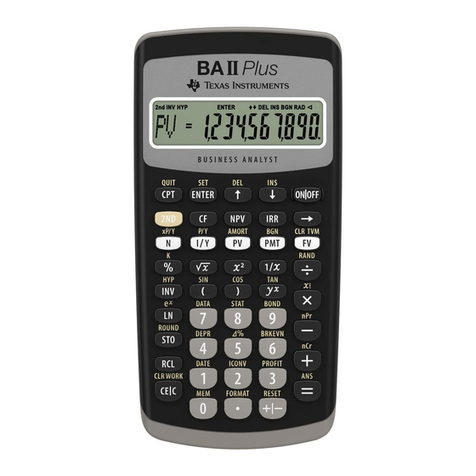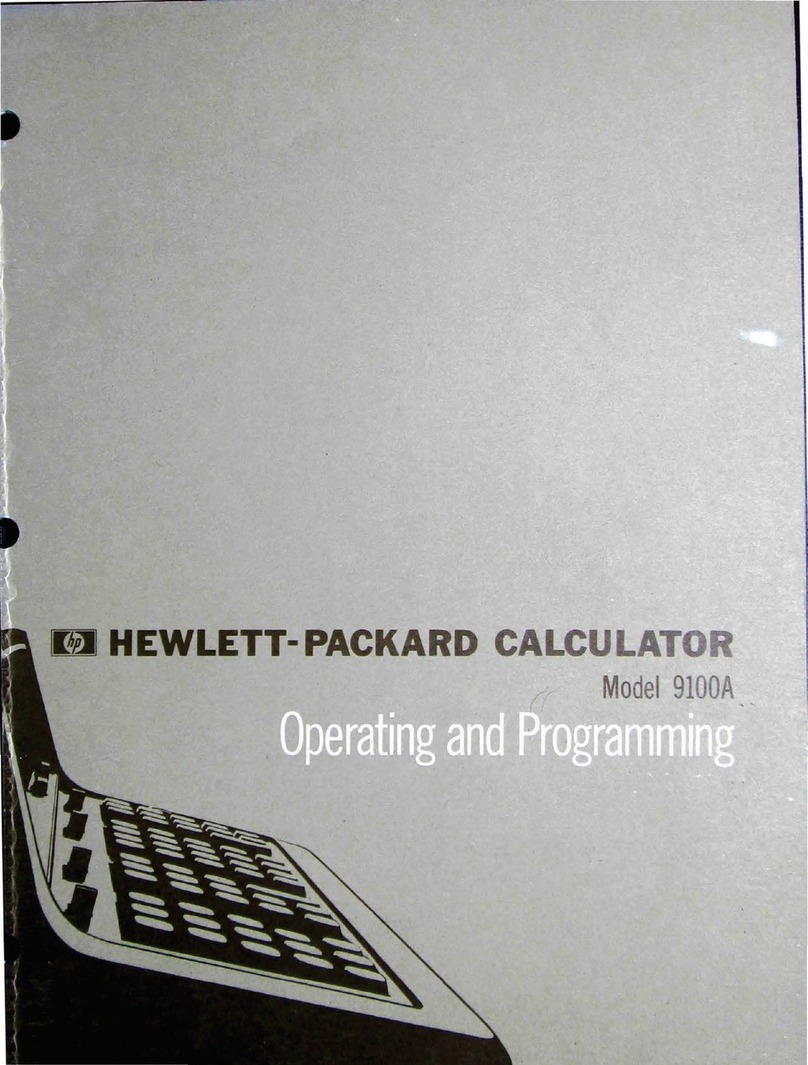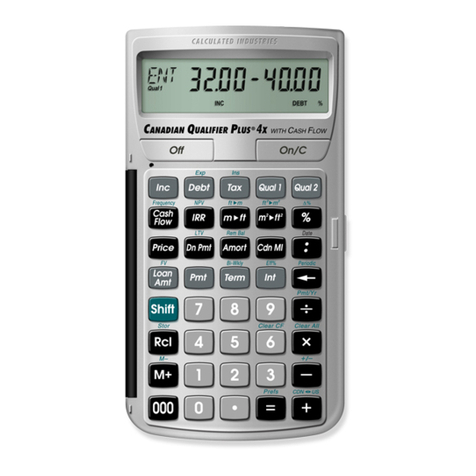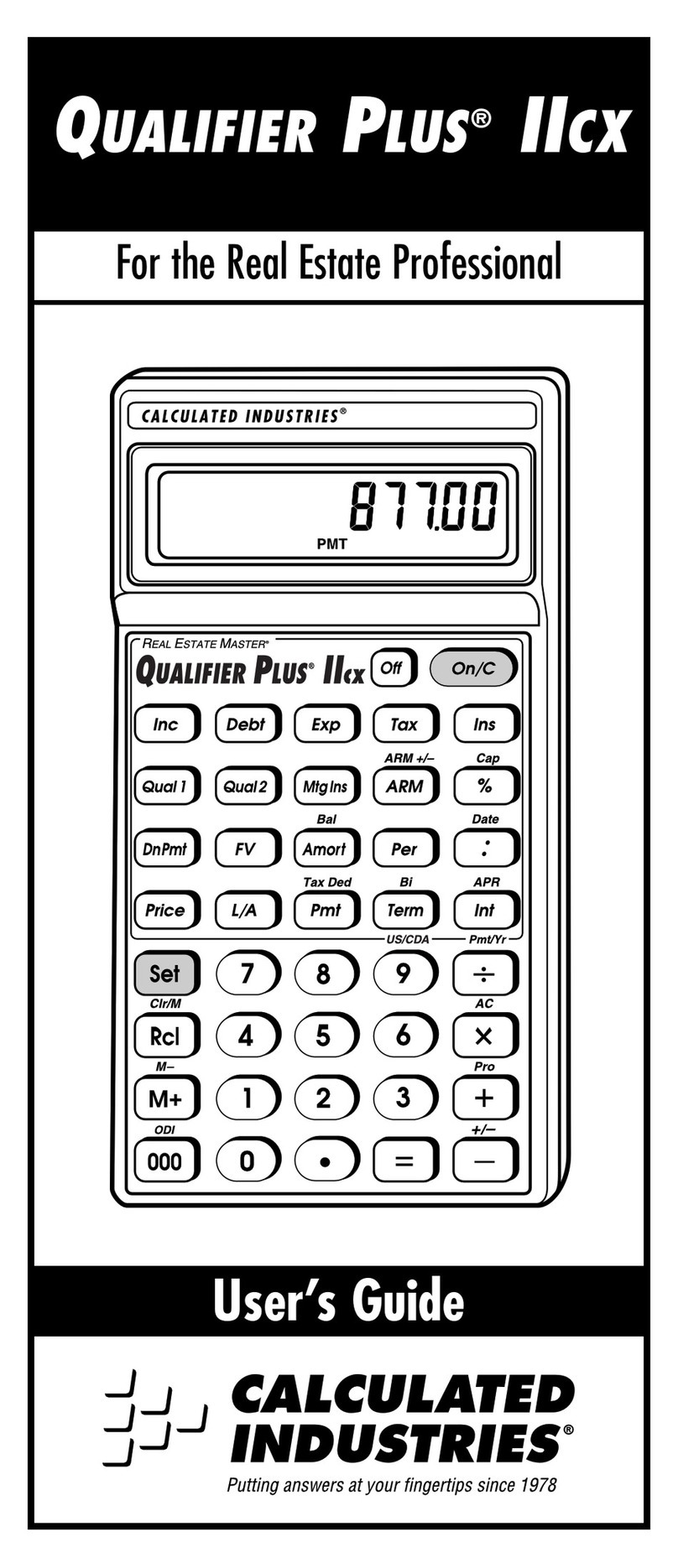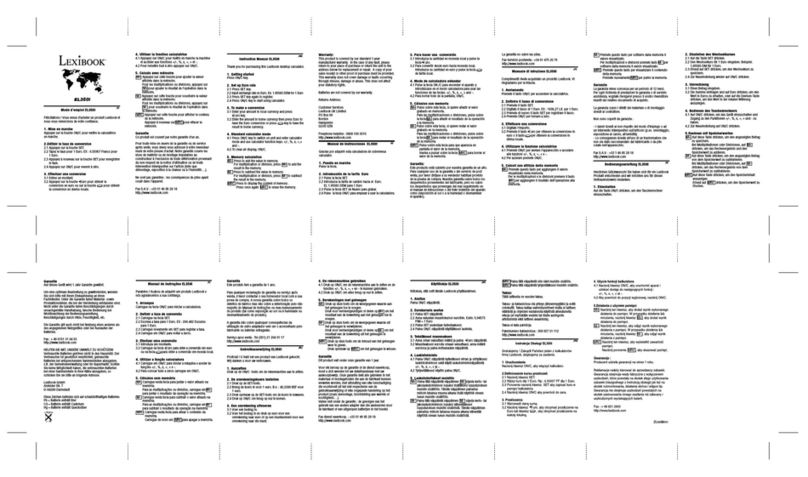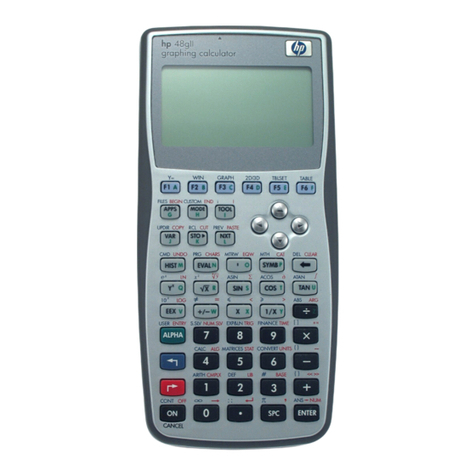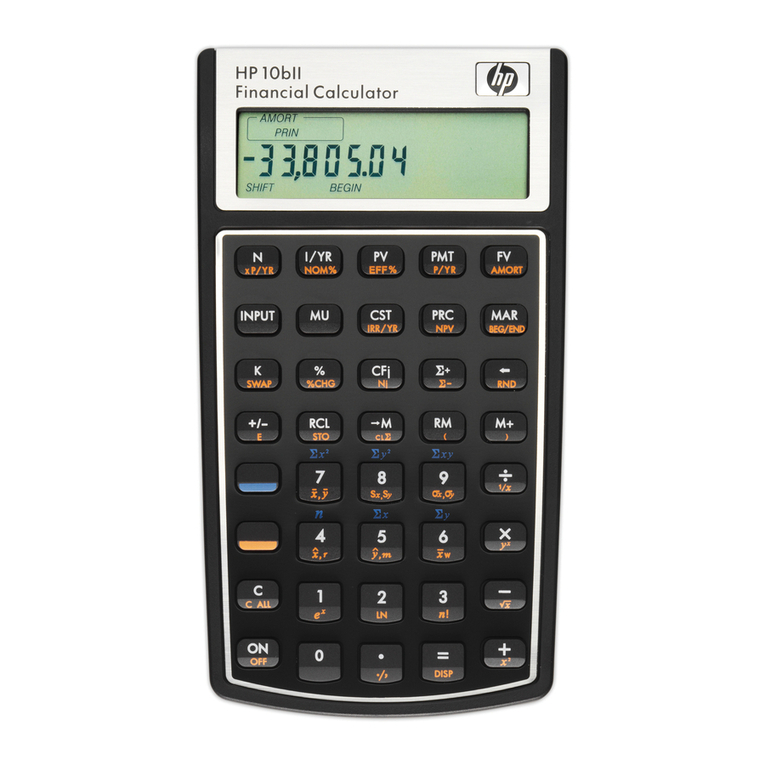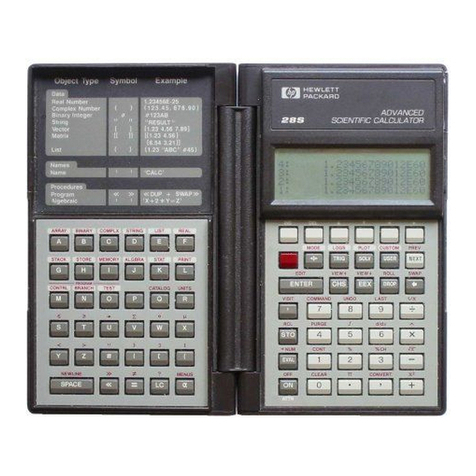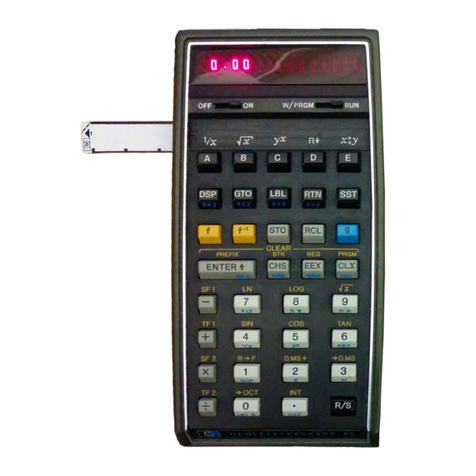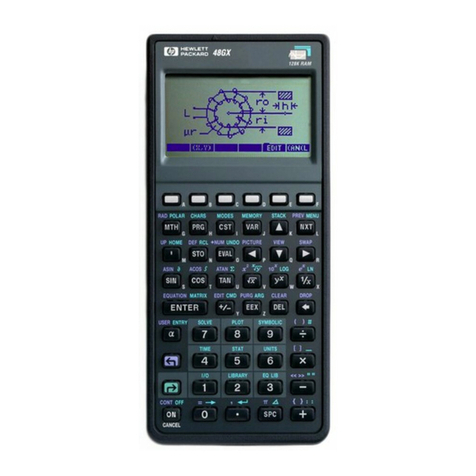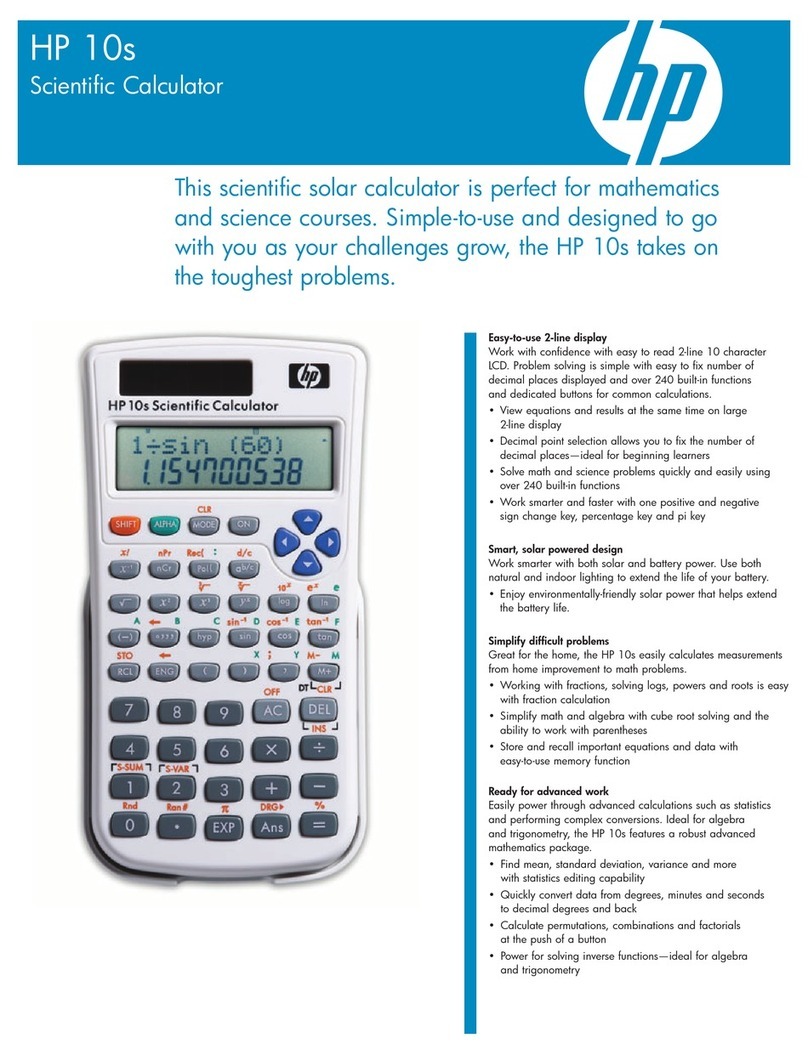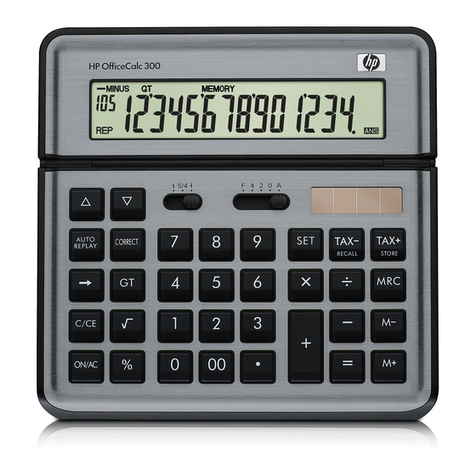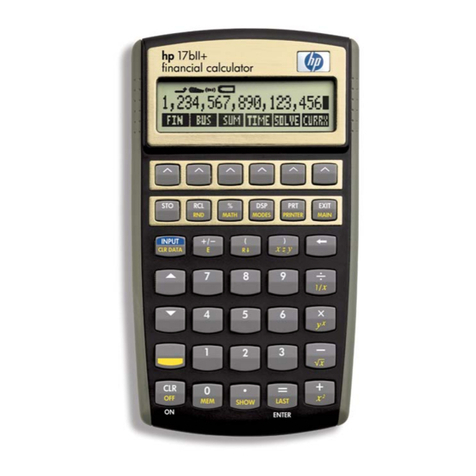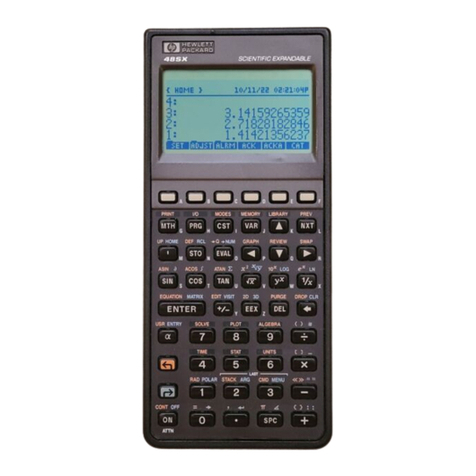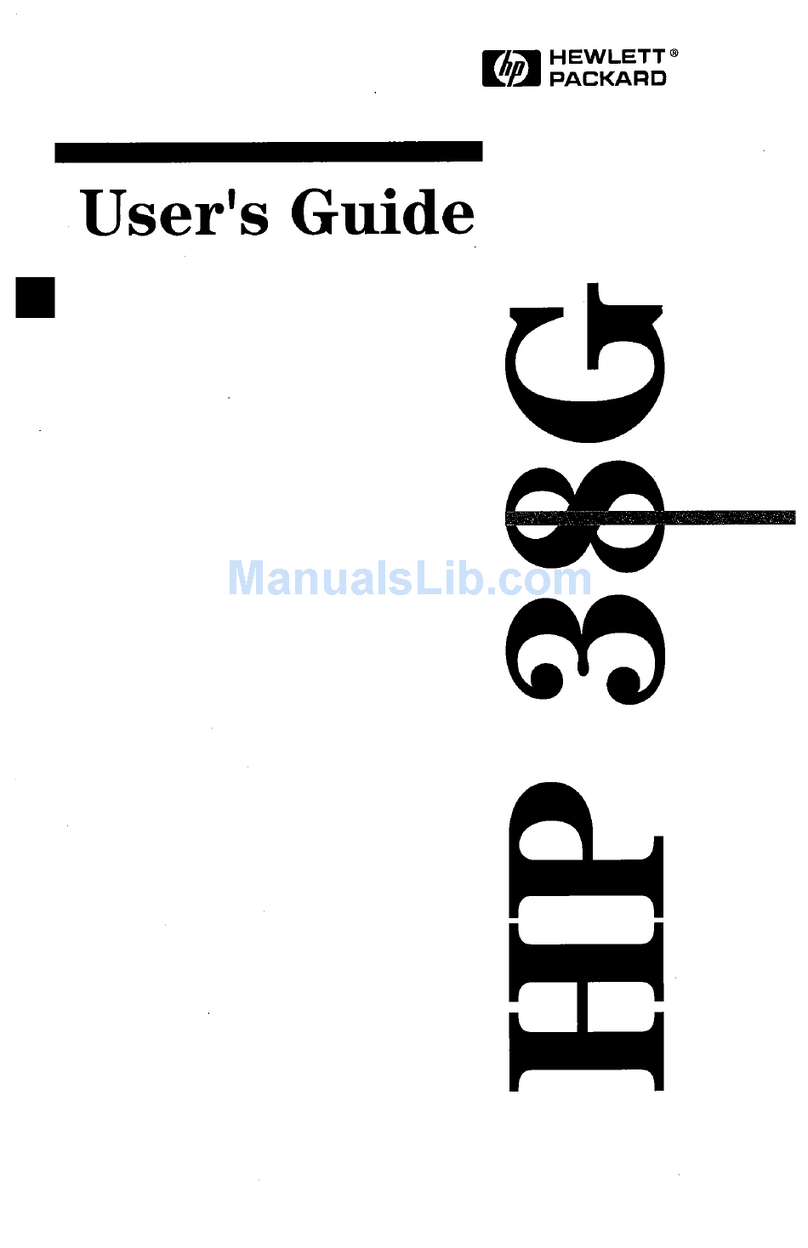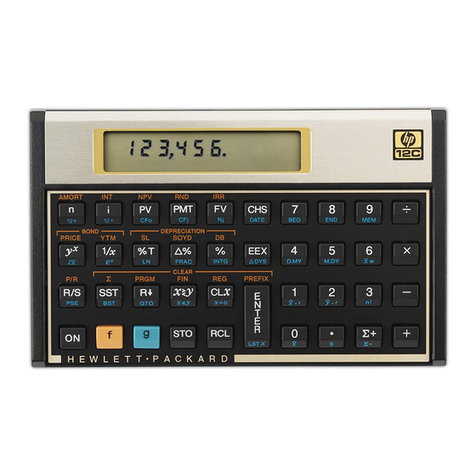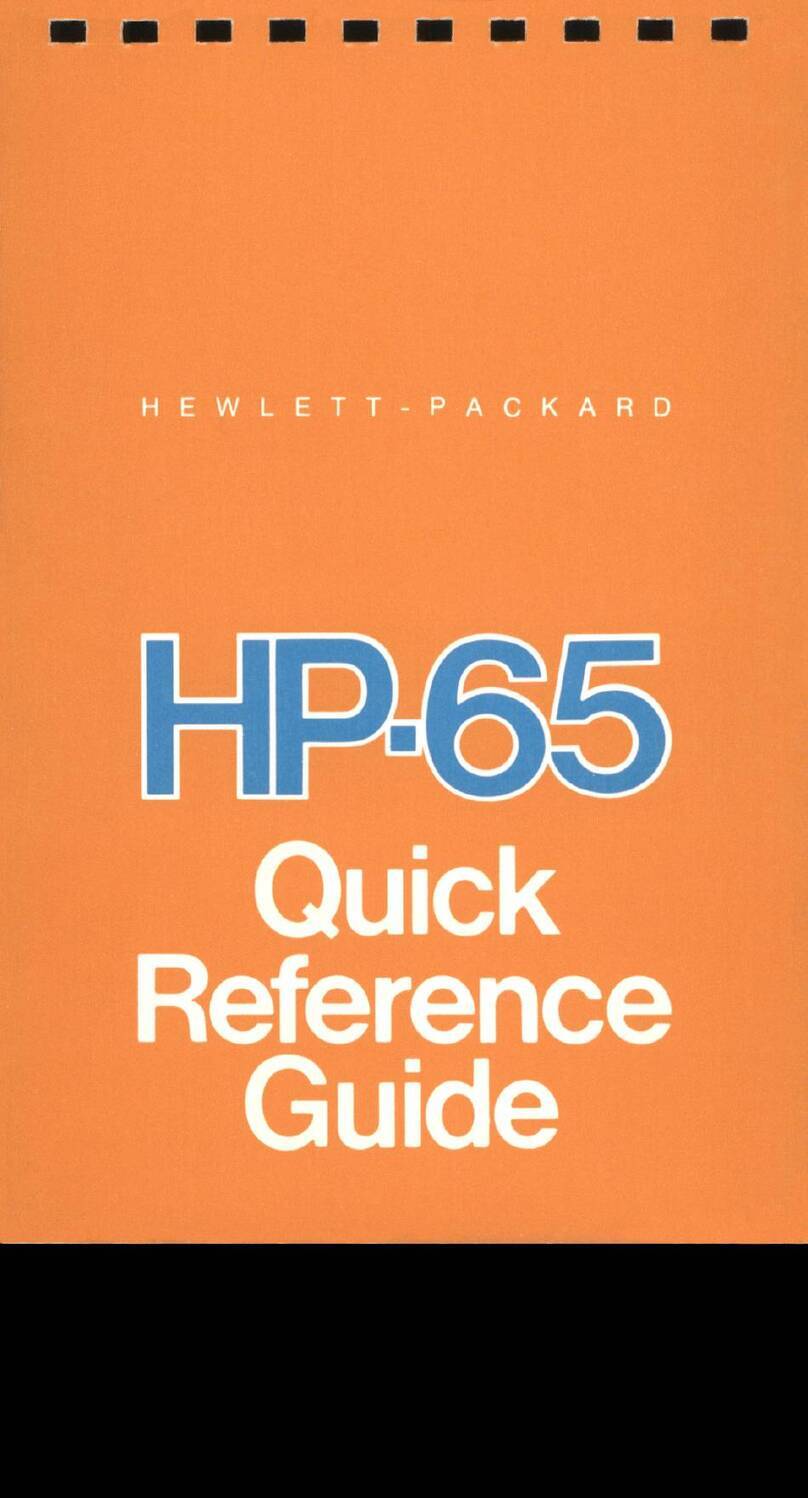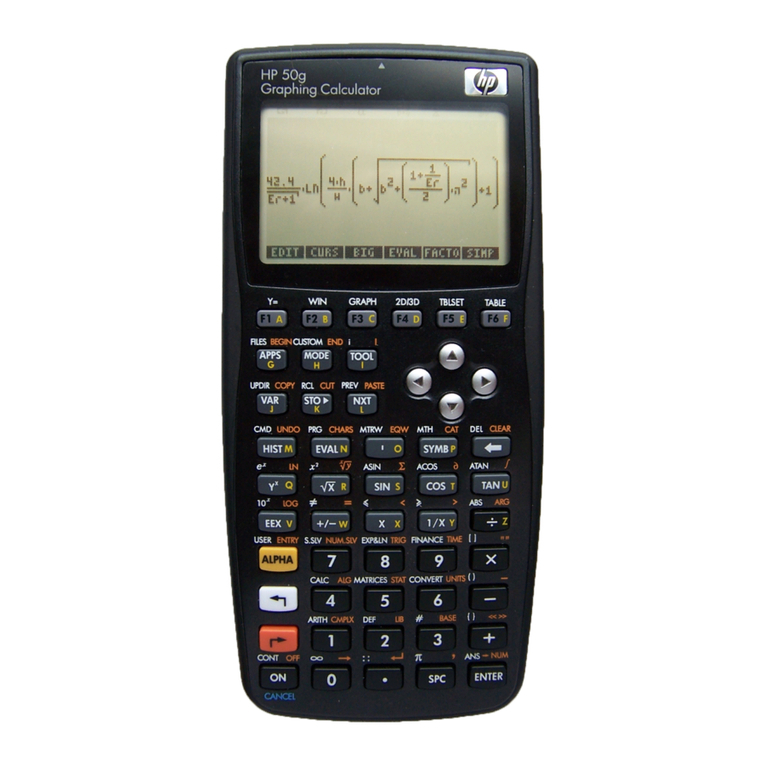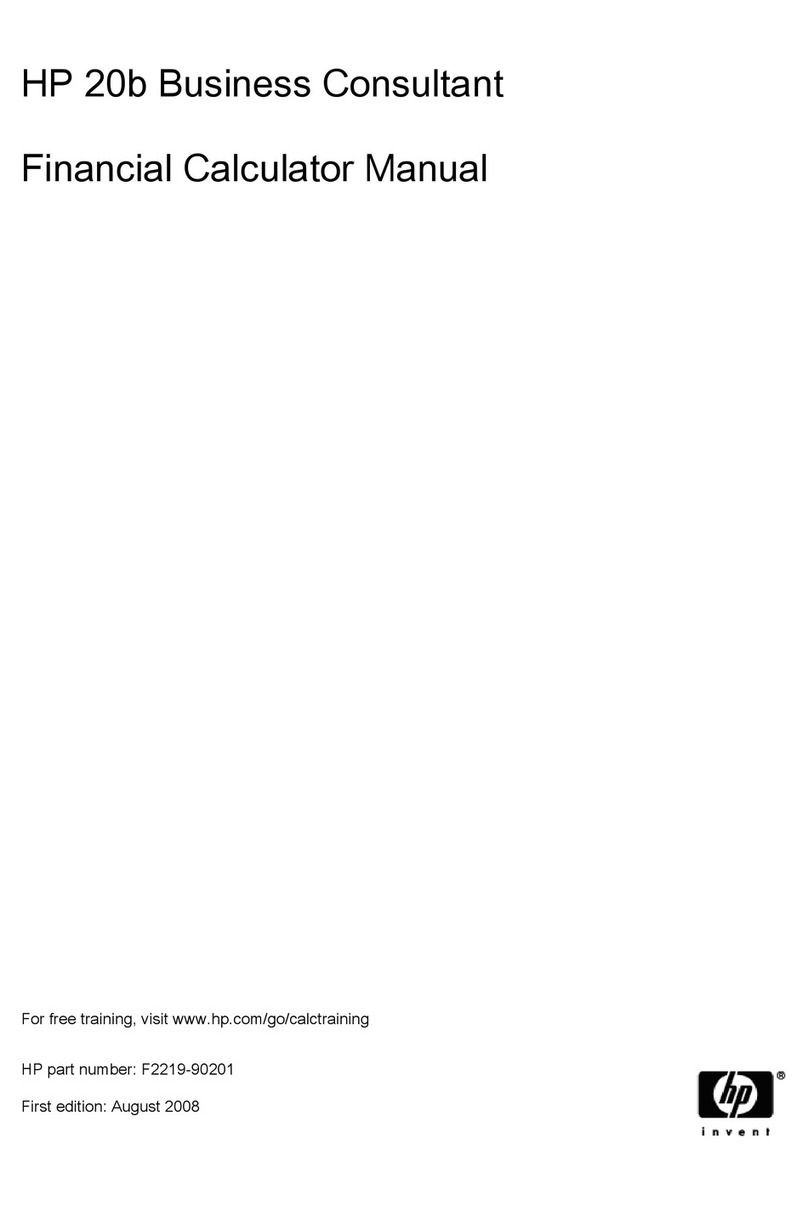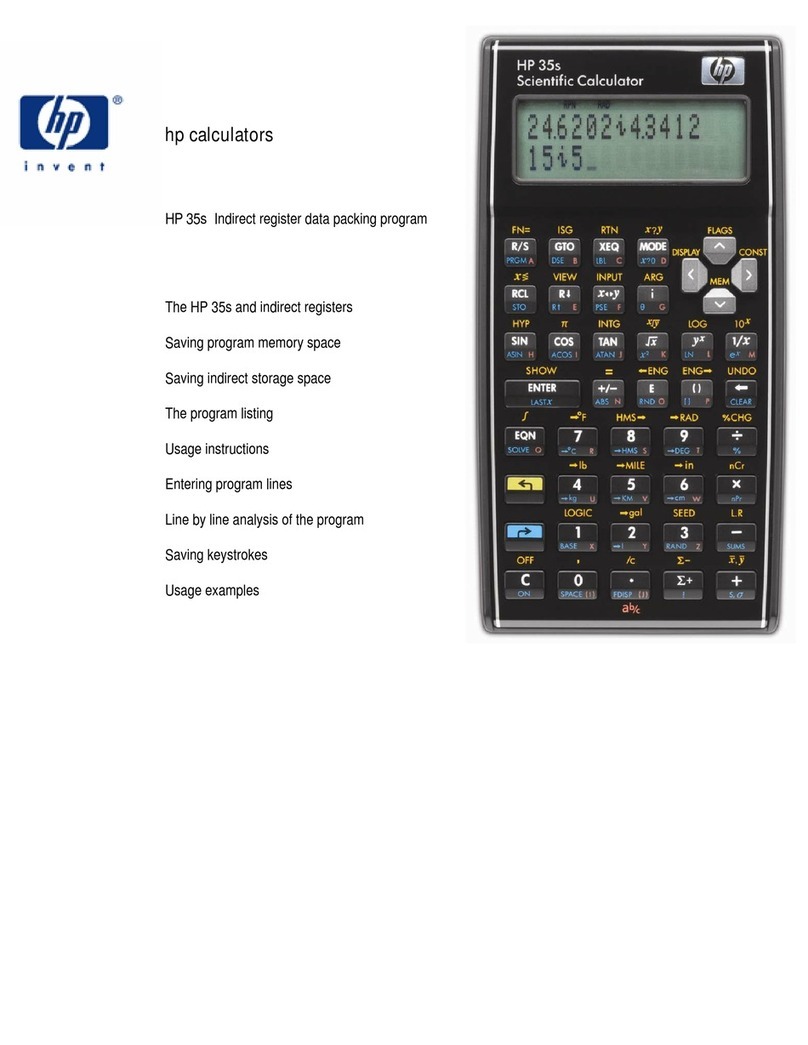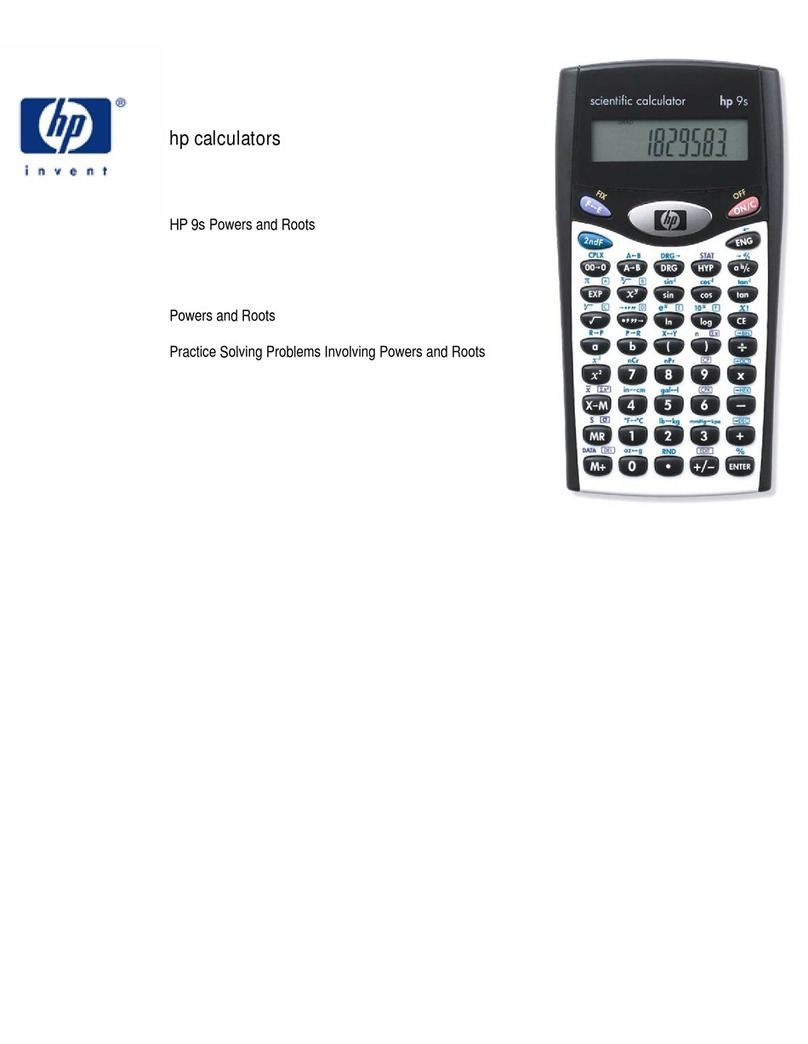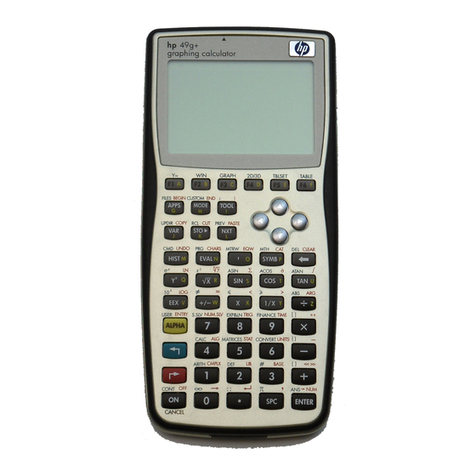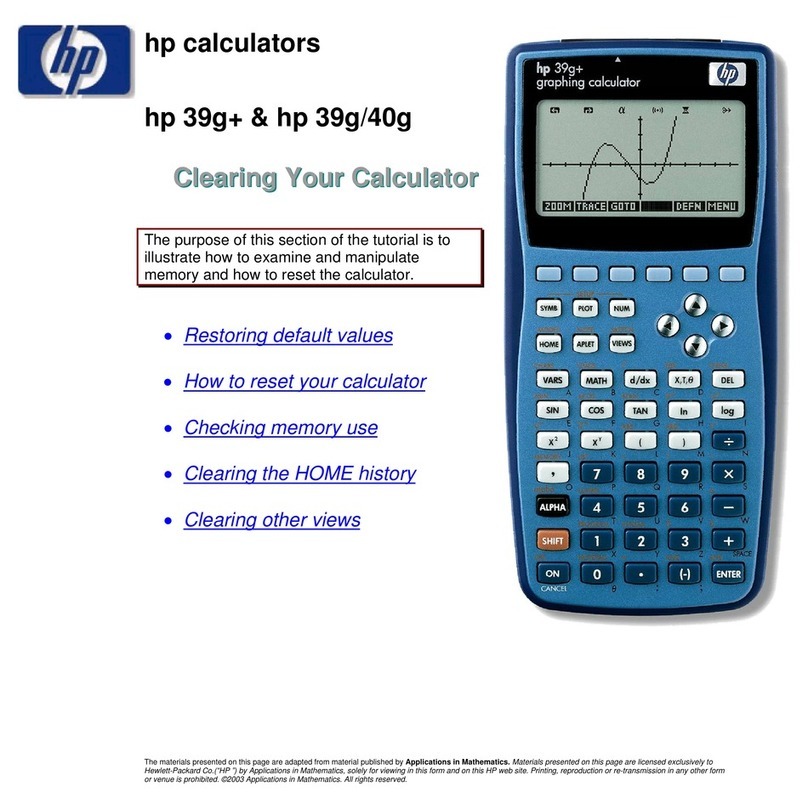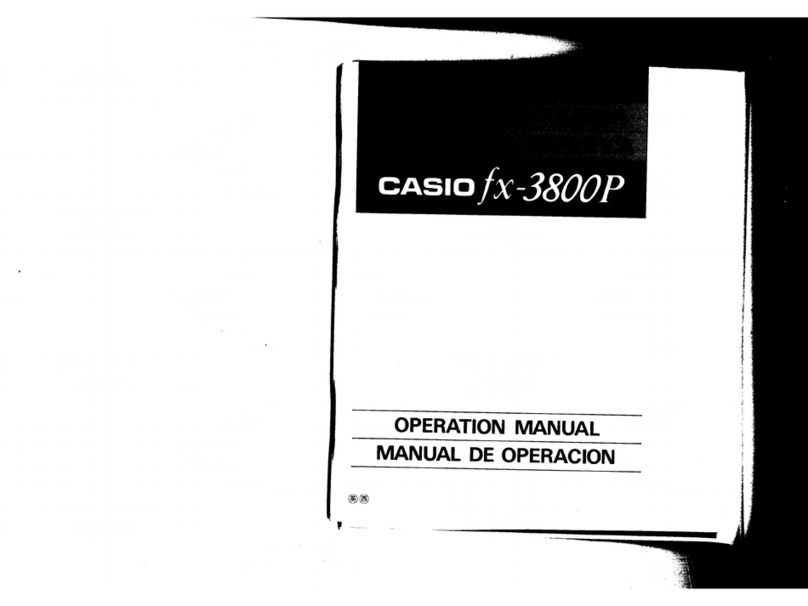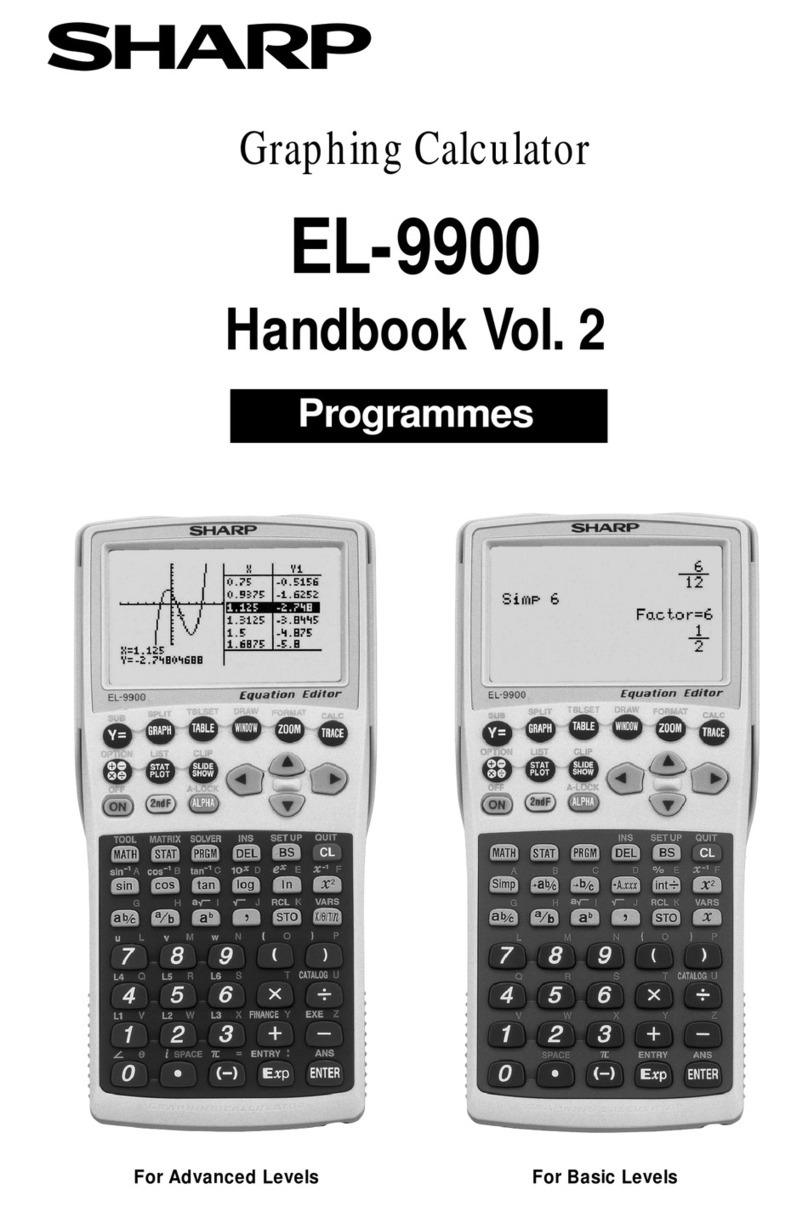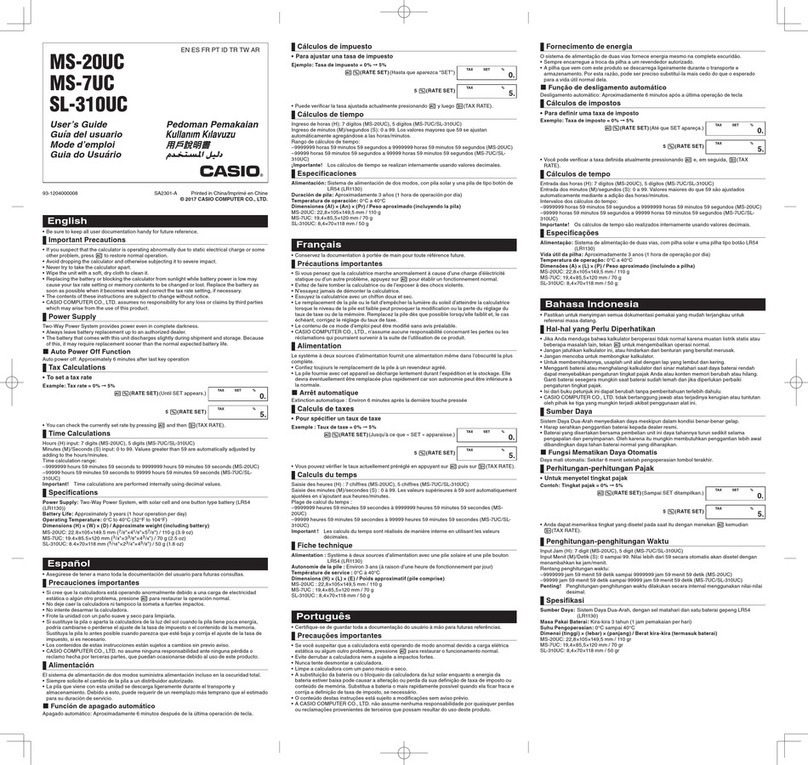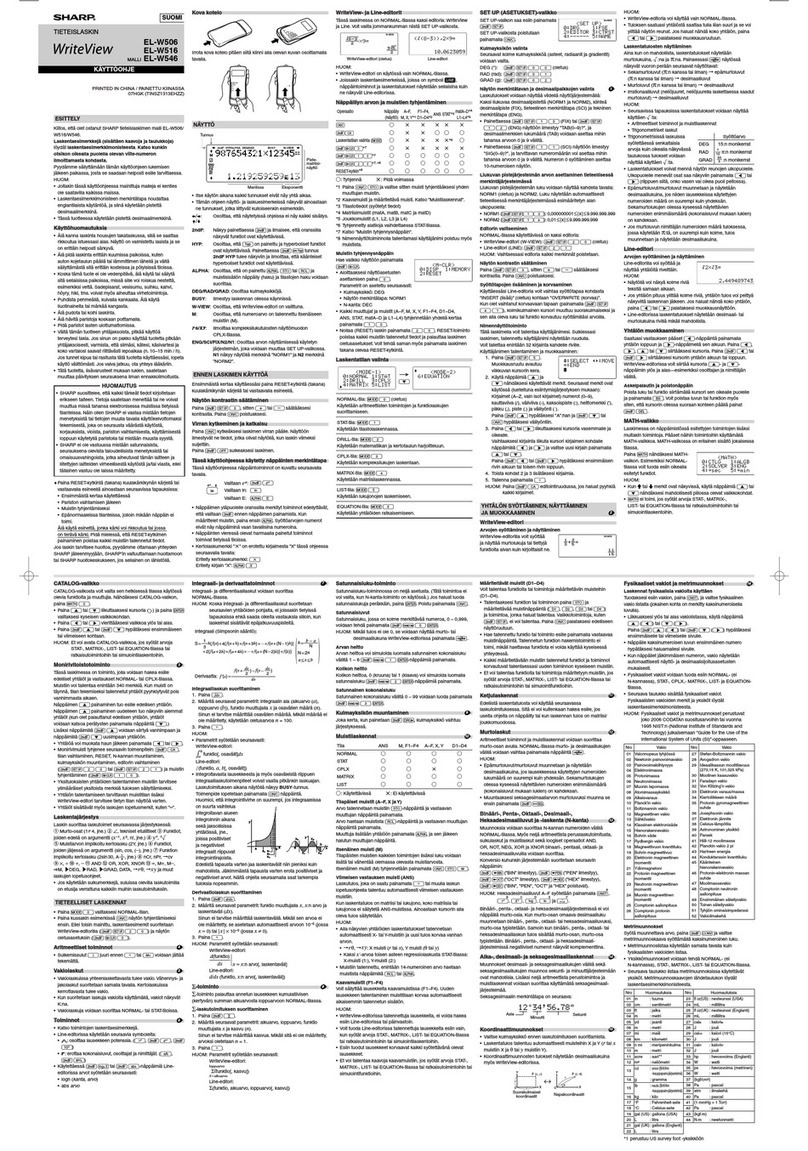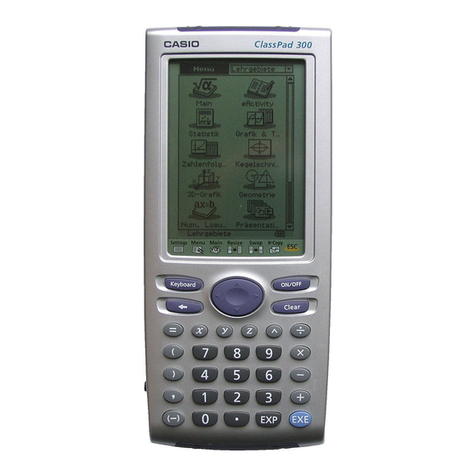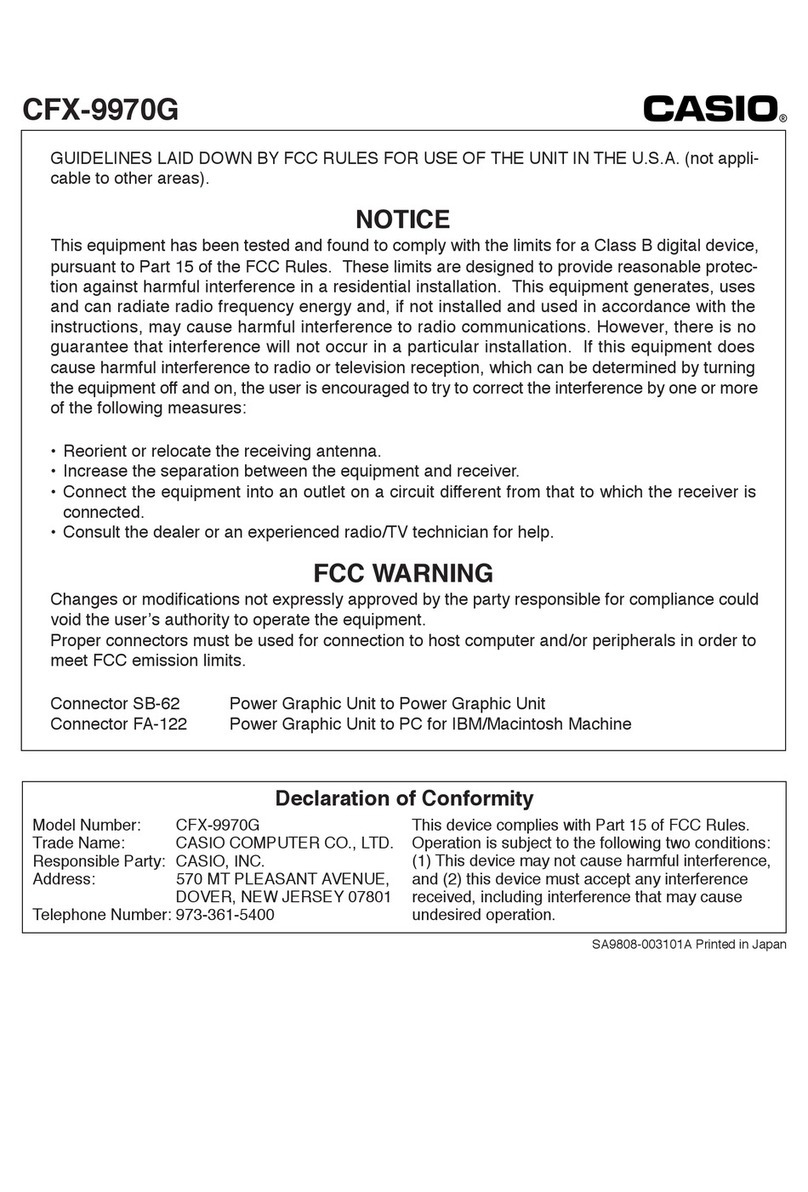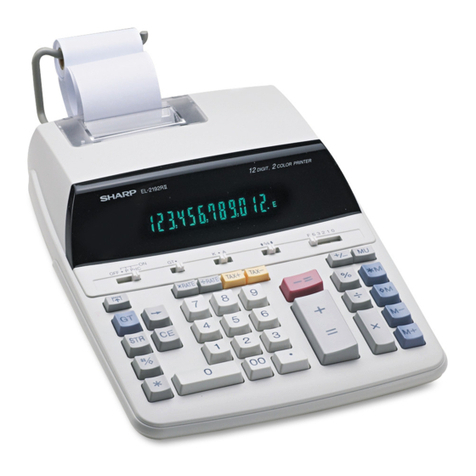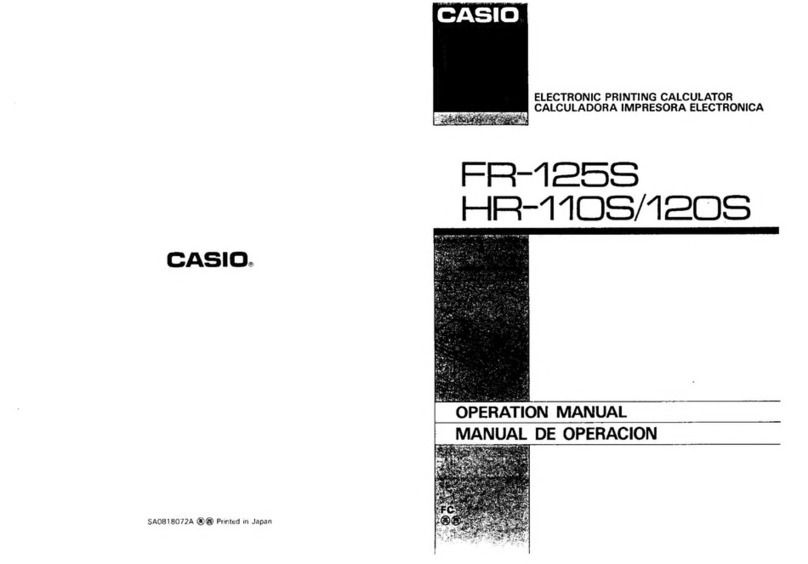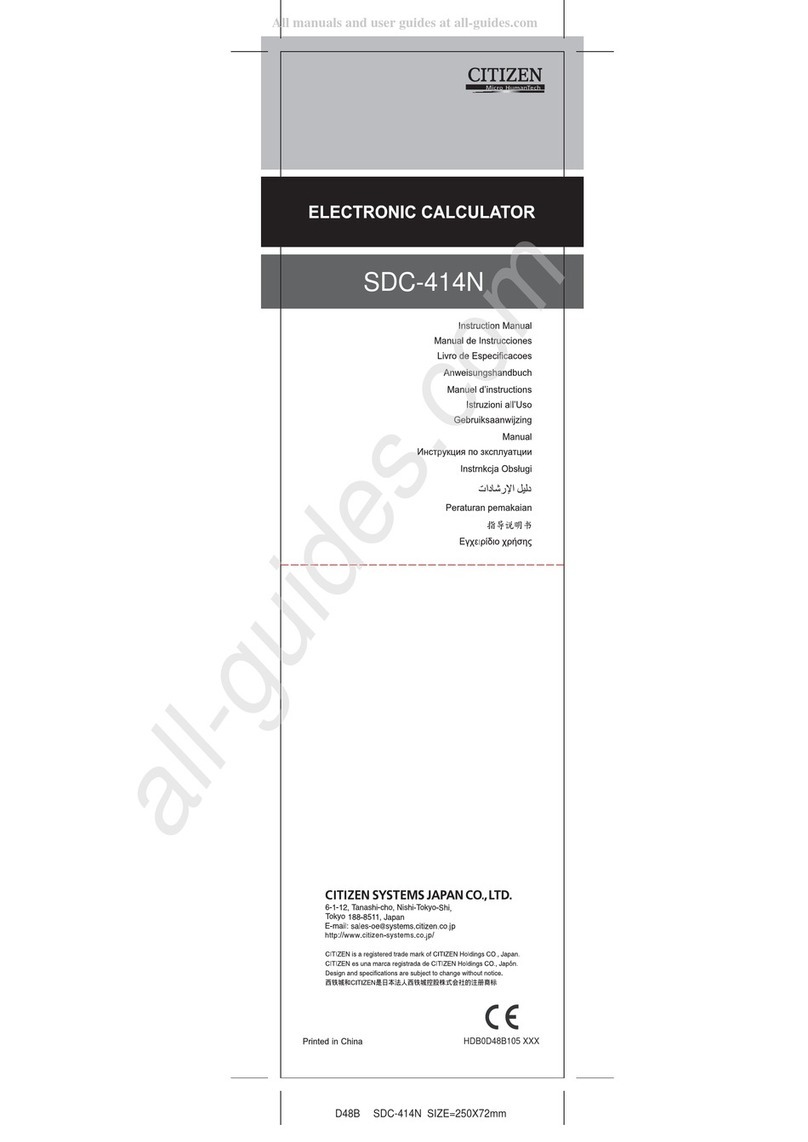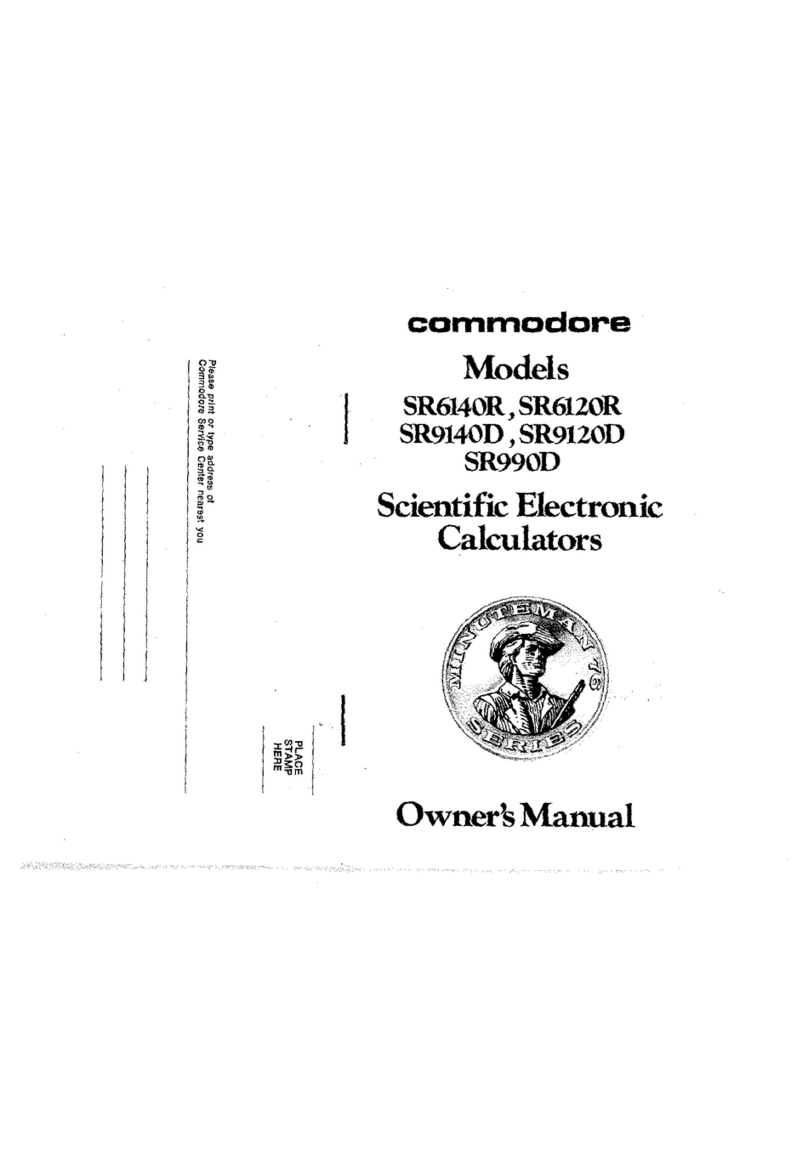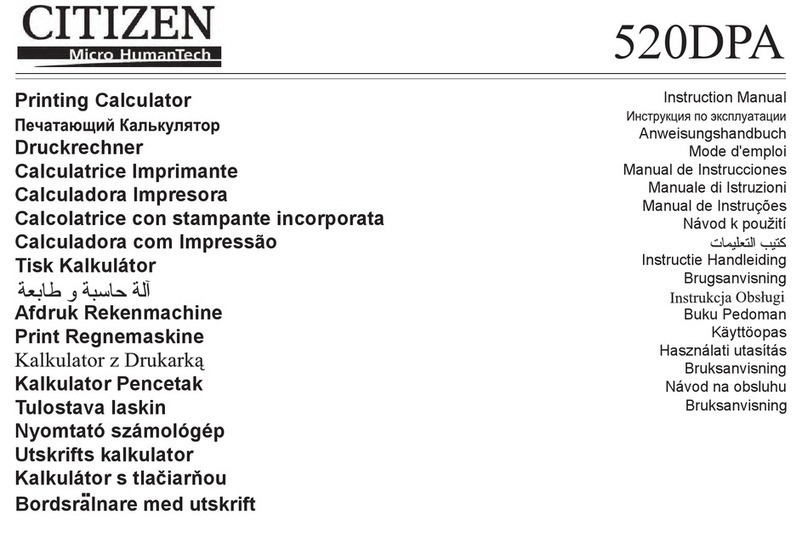
hp calculators
HP 48GII Probability – Rearranging items
The MTH (MATH) menu
The Math menu is accessed from the BLUEE shifted function of the Pkey by pressing !´. When pressed, a CHOOSE
box is displayed with a number of choices allowing problems to be solved with different math functions on the HP 48GII calculator.
Figure 1
The first choice allows for calculations dealing with vectors. The second choice provides access to many functions for working with
matrices. The third choice allows for the manipulation of lists and for using lists to apply mathematical functions to a list of numbers,
all at the same time. The fourth function provides access to the hyperbolic trigonometric functions. The fifth selection provides a list
of many functions that can be applied to real numbers. The sixth choice displays functions dealing with numbers in different bases.
Choices seven through eleven are not displayed in the screen above, but deal with probability, fast fourier transformations, complex
numbers, constants and a choice dealing with several special functions.
To display the probability menu, press 7`. The screen displays the first six of 10 functions involving probability.
Figure 2
Rearranging items
There are a great number of applications that involve determining the number of ways a group of items can be rearranged. The
factorial function, represented by ! on the 48GII, will determine the number of ways you can rearrange the total number of items in a
group. Note that the 48GII will interpret the factorial function as the gamma function if the argument for the function is a non-integer
real number. The Permutation function, PERM, will return the number of ways you can select a subgroup of a specified number of
items from a larger group, where the order of each of the items in the subgroup is important. The Combination function, COMB, will
return the number of ways you can select a subgroup of a specified number of items from a larger group, where the order of each of
the items in the subgroup is not important.
To see the difference between permutations and combinations, consider the set of three items A, B, and C. If we select a subgroup
of 2 items, We could select AC and CA as two possible subgroups. These would be counted as different subgroups if computing the
number of permutations, but only as one subgroup if computing the number of combinations. Note that the factorial function operates
the same in algebraic mode as it does in RPN mode. The number is keyed in and then the factorial function is selected from the
probability menu. In algebraic mode, the `key will then need to be pressed.
Factorials show up throughout mathematics and statistics. Permutations and combinations show up in many discrete probability
distribution calculations, such as the binomial and hypergeometric distributions.
Practice solving problems involving factorials, permutations, and combinations
Example 1: How many different ways could 4 people be seated at a table?
Solution: In RPN mode: 4!´7`3`
In Algebraic mode: 4!´7`3``
Answer: 24.
hp calculators - 2 - HP 48GII Probability – Rearranging items
